
SURVEYS IN GEOPHYSICS
Scope & Guideline
Elevating Geophysical Research Through Rigorous Scholarship
Introduction
Aims and Scopes
- Geophysical Modeling and Inversion Techniques:
The journal emphasizes advancements in geophysical modeling and inversion methodologies, including seismic, electromagnetic, and gravity data processing, which are critical for interpreting subsurface structures and processes. - Remote Sensing and Earth Observation:
There is a strong focus on the application of remote sensing technologies and satellite data to monitor and analyze geophysical phenomena, including climate change, natural disasters, and resource management. - Climate and Environmental Geophysics:
Research related to the geophysical aspects of climate change, including energy balance, hydrometeorological extremes, and ecosystem monitoring, is a core area of interest, reflecting the journal's commitment to addressing pressing environmental issues. - Interdisciplinary Approaches to Geophysical Challenges:
The journal encourages interdisciplinary studies that incorporate insights from geology, meteorology, oceanography, and other fields to address complex geophysical challenges, promoting a holistic understanding of Earth's systems. - Technological Innovations in Geophysics:
Innovations in geophysical instrumentation and computational methods, including machine learning applications and advanced data processing techniques, are highlighted, showcasing the evolving nature of the field.
Trending and Emerging
- Machine Learning and AI in Geophysics:
There is a notable increase in studies applying machine learning and artificial intelligence to geophysical data analysis, enhancing predictive capabilities and data interpretation. - Climate Change and Its Geophysical Impacts:
Research focusing on the geophysical implications of climate change, including sea-level rise, extreme weather events, and energy imbalances, is increasingly prominent, reflecting global environmental concerns. - Integrated Earth Observation Systems:
The trend towards using integrated Earth observation systems that combine multiple data sources (satellite, ground-based, and airborne) to provide comprehensive geophysical insights is gaining momentum. - Quantum and Advanced Sensing Technologies:
Emerging technologies, such as quantum sensors for gravity measurement and advanced electromagnetic methods, are being explored, indicating a shift towards more sensitive and accurate geophysical measurements. - Geophysical Monitoring of Natural Hazards:
There is a rising emphasis on using geophysical methods for the monitoring and early warning of natural hazards, such as earthquakes and volcanic eruptions, which is critical for disaster risk reduction.
Declining or Waning
- Traditional Seismic Methods:
While traditional seismic methods remain important, there is a noticeable decline in publications focusing solely on conventional techniques, as newer methodologies and technologies gain traction. - Geophysical Applications in Oil and Gas Exploration:
Research specifically aimed at oil and gas exploration using geophysical methods has seen a reduction, possibly due to the industry's shift towards sustainability and alternative energy sources. - Static Geophysical Surveys:
The focus on static or less dynamic geophysical surveys has diminished, with a growing emphasis on real-time monitoring and dynamic analysis using advanced technologies. - Low-Resolution Remote Sensing:
There is a decline in interest in low-resolution remote sensing applications, as researchers increasingly prioritize high-resolution and more precise satellite data for geophysical analysis. - Single-Domain Studies:
Research that concentrates exclusively on a single geophysical domain (e.g., only seismic or only magnetic studies) is becoming less common in favor of integrated approaches that combine multiple geophysical datasets.
Similar Journals
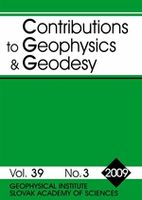
Contributions to Geophysics and Geodesy
Advancing Earth Sciences Through Open Access InnovationContributions to Geophysics and Geodesy is a distinguished open access journal dedicated to advancing the field of geophysics and geodesy, published by the SLOVAK ACADEMY OF SCIENCES, EARTH SCIENCE INSTITUTE. With a rich publication history since its inception in 1992 and a commitment to open access since 2009, this journal serves as a vital platform for disseminating innovative research and critical insights in Earth sciences. Although it currently holds a Q4 ranking in the Geophysics category and is positioned in the 29th percentile, it continues to foster scholarly dialogue and enhance the visibility of significant findings in the community. Situated in Slovakia, the journal's address underscores its international reach and relevance. Researchers, professionals, and students alike will find valuable resources and perspectives within its pages, aiming to bridge gaps in knowledge and contribute meaningfully to the ongoing global discourse in geophysical sciences.
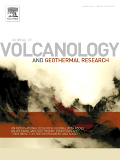
JOURNAL OF VOLCANOLOGY AND GEOTHERMAL RESEARCH
Advancing the Frontiers of Volcanology and Geothermal ScienceWelcome to the Journal of Volcanology and Geothermal Research, a premier publication dedicated to advancing the understanding of volcanic and geothermal processes. Published by Elsevier in the Netherlands, this esteemed journal holds a distinguished Q1 ranking in both Geochemistry and Petrology and Geophysics, reflecting its influential contribution to the field. Since its inception in 1976, the journal has served as a critical platform for high-quality research, disseminating cutting-edge findings that shape the discourse surrounding Earth sciences. With an impressive Scopus ranking—27th in Geophysics and 43rd in Geochemistry and Petrology—scholars and practitioners alike regard it as an essential resource for staying informed on the latest research trends. Although it does not provide open access options, the journal remains committed to enriching the academic community's understanding of geothermal energy, volcanic hazards, and related geophysical phenomena, making it a must-read for anyone invested in these dynamic fields.
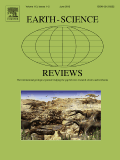
EARTH-SCIENCE REVIEWS
Unveiling the depths of our planet's mysteries.EARTH-SCIENCE REVIEWS, published by Elsevier, is a prestigious journal in the field of Earth and Planetary Sciences. With an impressive impact factor and ranked in the Q1 quartile for its category, this journal has established itself as a leading platform for the dissemination of high-quality research and reviews. Spanning topics within general Earth and planetary sciences, the journal provides a unique confluence of interdisciplinary studies, serving researchers, professionals, and students who seek to deepen their understanding and foster advancements in the field. Based in the Netherlands, the journal has been integral to the scholarly community since its inception in 1966, with an ongoing commitment to presenting cutting-edge reviews that propel scientific discussions forward. While it does not offer open access options, its rigorous review process and high-ranking status make it a valuable resource for anyone engaged in earth sciences.
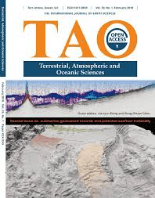
TERRESTRIAL ATMOSPHERIC AND OCEANIC SCIENCES
Unveiling Connections Between Land, Air, and SeaTERRESTRIAL ATMOSPHERIC AND OCEANIC SCIENCES, published by SpringerNature, is a distinguished peer-reviewed journal that has been an essential platform for innovative research in the fields of atmospheric science, oceanography, and Earth and planetary sciences since its inception. With an Open Access policy established in 1990, the journal ensures wide dissemination of knowledge, allowing researchers, professionals, and students to access cutting-edge findings without restrictions. Based in Switzerland and featuring a comprehensive coverage from 1996 to 2024, the journal currently holds a Q3 ranking across various categories, indicating its growing significance in the scientific community. Although it is positioned within the 39th percentile in Earth and Planetary Sciences, its commitment to fostering high-quality research makes it a valuable resource for advancing understanding of terrestrial environments and their interconnections. Researchers seeking a platform for their work in atmospheric and oceanic sciences will find TERRESTRIAL ATMOSPHERIC AND OCEANIC SCIENCES to be an ideal venue for sharing their insights with a global audience.

Acta Geophysica
Advancing Geophysical Knowledge for a Sustainable Future.Acta Geophysica is a distinguished peer-reviewed journal published by Springer International Publishing AG, focusing on the dynamic field of Geophysics. With an ISSN of 1895-6572 and an E-ISSN of 1895-7455, this journal stands as a critical platform for disseminating cutting-edge research and advancements from 2006 to 2024. Acta Geophysica maintains a respectable impact factor, reflecting its contribution to the global scientific community, where it ranks in the Q2 category within Geophysics, and is positioned 55 out of 165 in Scopus' Earth and Planetary Sciences, placing it in the 66th percentile. Based in Switzerland, the journal invites submissions that address a diverse range of topics, including seismic studies, geodynamics, and climate change impacts, thereby fostering in-depth discussions and innovative solutions in geophysical research. Access to the journal's content is offered through subscription-based options, ensuring a sustainable model for high-quality scientific exchange. By connecting researchers, professionals, and students, Acta Geophysica plays a vital role in advancing the understanding of Earth's processes and contributing to the field's evolution.

Exploration Geophysics
Exploring New Frontiers in Geology and GeophysicsExploration Geophysics is a prestigious journal published by Taylor & Francis Ltd., prominently focusing on the interdisciplinary fields of geology and geophysics. Established in 1970 and continuing its legacy to 2024, this journal serves as a vital platform for researchers, professionals, and students alike, disseminating cutting-edge research and innovative methodologies in earth sciences. With a robust impact factor that highlights its academic influence, and classified in the Q3 category for both geology and geophysics, it ranks among the notable publications in the field, placing it in the 51st and 50th percentiles of its respective categories. Although available through standard subscription access, the journal encourages engagement from a diverse readership aimed at exploring the intricacies of earth processes, resource exploration, and environmental evaluations. By contributing valuable insights and fostering collaborations, Exploration Geophysics continues to play a crucial role in advancing the understanding of our planet's subsurface dynamics.

Geofizicheskiy Zhurnal-Geophysical Journal
Advancing Geophysical Insights for a Dynamic WorldGeofizicheskiy Zhurnal-Geophysical Journal, published by the esteemed S I Subbotin Institute of Geophysics, National Academy of Sciences of Ukraine, stands as a vital resource for professionals and researchers in the field of geophysics. With an ISSN of 0203-3100 and an E-ISSN of 2524-1052, this journal is recognized for its rigorous peer-reviewed articles that delve into various aspects of geophysical research, including seismic studies, geodynamics, and Earth surface processes. Although currently not under an open access model, the journal maintains a commitment to disseminating high-quality research, thereby enriching the global geophysical community. The publication aims to foster collaboration and knowledge transfer among scientists and engineers while addressing complex geophysical challenges in a rapidly evolving landscape. By engaging with cutting-edge research, readers can expect to uncover insights that advance both theoretical understanding and practical applications in geophysical science.
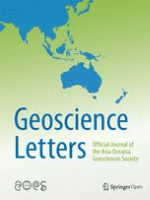
Geoscience Letters
Unlocking the Secrets of Our PlanetGeoscience Letters, published by Springer, is a prominent open-access journal in the field of Earth and Planetary Sciences, recognized for its dedication to advancing knowledge and research in this vital area of study. With a reported impact factor that reflects its esteemed position—ranking in the Q1 quartile of Earth and Planetary Sciences, particularly as the journal ranks #48 out of 195 in the general category according to Scopus—the journal serves as a vital resource for researchers, professionals, and students. Since its inception in 2014, Geoscience Letters has facilitated the dissemination of high-quality research and critical insights, aiming to bridge the gap between scientific discovery and societal needs. Its commitment to open access ensures that the latest findings are readily available to a global audience, thus enhancing collaboration and innovation within the geosciences community.
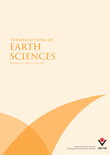
TURKISH JOURNAL OF EARTH SCIENCES
Innovating Insights in Earth and Planetary SciencesTURKISH JOURNAL OF EARTH SCIENCES, published by the Tubitak Scientific & Technological Research Council Turkey, is a premier platform dedicated to advancing the field of Earth and Planetary Sciences. With an ISSN of 1300-0985, this journal has been a significant contributor to the international scientific community since its inception in 2002, and is set to continue publishing groundbreaking research through 2024. As a recognized journal in the Q2 quartile of Earth and Planetary Sciences, it ranks #98 out of 195 in its category according to Scopus metrics, positioning it within the 50th percentile of its field. The journal emphasizes peer-reviewed research, providing invaluable insights that facilitate scholarly discourse and promote rigorous investigation into various aspects of the Earth sciences. Although it does not currently offer open access, the journal remains a vital resource for academics, professionals, and students seeking to deepen their understanding of geological phenomena and contribute to the advancement of this essential discipline.

GEOPHYSICAL RESEARCH LETTERS
Pioneering Research in Earth and Planetary Sciences.GEOPHYSICAL RESEARCH LETTERS is a renowned academic journal published by the American Geophysical Union that plays a pivotal role in advancing the field of Earth and Planetary Sciences. Established in 1974, this esteemed journal provides a platform for the latest research and innovations in geophysics, including but not limited to, solid earth, atmospheric sciences, and oceanography. With its impressive ranking of #7 out of 165 in Geophysics and #13 out of 195 in General Earth and Planetary Sciences according to Scopus, and being categorized in the Q1 quartile for both fields in 2023, it is a leading choice for academic and professional researchers alike. While GEOPHYSICAL RESEARCH LETTERS does not currently offer open access, it remains committed to disseminating high-quality, peer-reviewed scientific literature. With ongoing contributions expected through to 2024, this journal is essential for those who seek to deepen their understanding and engage with cutting-edge developments in geophysical research. Its influence and reach underscore its significance in shaping the future of geophysical inquiry.